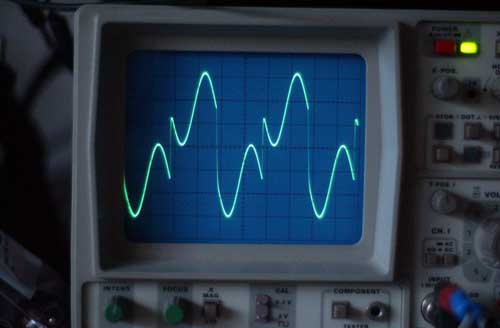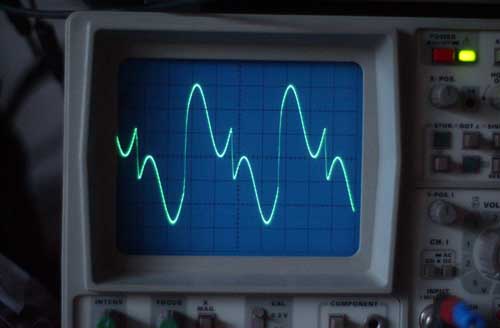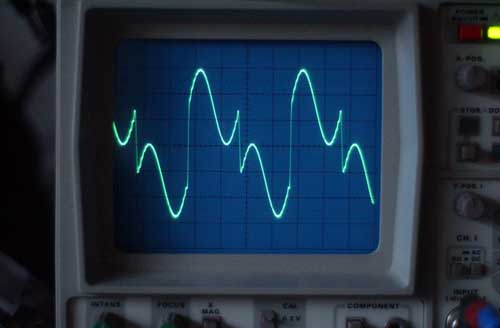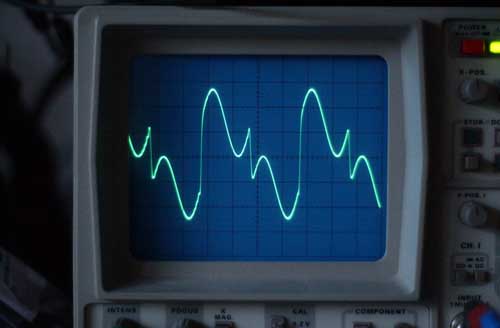
The Creation ADC
The Altmann Creation ADC is the world's first zero-oversampling high sample-rate audio AD converter.
The design is capable of up to 400 kilo-samples-per-second, however it's speed has been reduced to accomodate todays slower sample rates of 44.1, 48, 88.2, 96, 176.4 and 192 kHz.
The Altmann Creation ADC employs the most advanced converter technologies, UPCI jitter suppression and mechanical optimization according to the Mother-of-Tone character in order to perform todays best possible sound recordings.
Like the BYOB amplifier, the complete electronic assembly of the Creation ADC is vibrationally optimized, as the pcb is flat-press-mounted on a specially treated spruce-board. This construction is time-consuming during manufacture, but improves sound quality, as all components are mechanically coupled to a musical sound board.
Analog inputs and digital output are high-quality RCA connectors, that are directly singal- and ground-soldered to the pcb.
The Creation ADC is designed to be powered by a single 12V car- or motorcylce battery, as battery power is pure, and a prerequisite for precision AD conversion.
The unit is reverse polarity protected. Battery status is monitored by a blue power-LED.
Features
Non-oversampling true time-discrete sampling operation at 16 bit precision.
No analog or digital filters.
Supports 44.1, 48, 88.2, 96, 176.4, 192 kHz sample rates (up to 400kHz on special order).
One converter per stereo channel.
-90 dB background hiss (sounds like a tape-machine). No idle tones.
RCA analog stereo single-ended inputs (balanced inputs available on special order).
RCA S/PDIF (transformer coupled) and Toslink optical digital outputs running simultaneously.
Wordclock input for external synchronization (optional).
High quality BurrBrown opamp input buffer and Wima coupling caps.
Input sensitivity 5V peak to peak.
Ultra-low latency: 0,022ms@44.1kHz ..... 0,005ms@192 kHz.
Single 12V supply (via external battery), power consumption: 150mA.
What the heck ?
While all of todays analog to digital converters employ 1-bit or low bit sampling and rely on digital calculations in order to interpret a 1-bit-stream into 24-bit output data, the Altmann Creation ADC uses a true 16-bit sampling topology without any filtering and without any digital processing.
What does that mean ?
It simply means that a true 16 bit precision measurement is performed on the analog input signal up to 192000 times per second.
Why do all others use 1 bit or low bit AD converters which calculate 24 bit output data ?
Because its about 20 times cheaper to do so.
Why 16 bit ?
16 to 18 bits - with todays technology - is the highest available precision for performing a REAL AD-CONVERSION at high speed. The emphasis is on REAL AD-CONVERSION. Todays other AD converters with their low-bit topology perform a time-averaging AD conversion which is subject to mathematical interpretation.
A REAL AD conversion, as performed by the Altmann Creation ADC is not subject to interpretation, but it is a real precision measurement of the analog input signal.
Any practical Difference ?
There is one significant difference between a real AD-Converter like the Altmann Creation ADC and all other today's AD-Converters, and this difference lies in the response to fast signals:
Let's do a AD recording of a test-signal, which is constructed of a 1kHz sinewave plus fast steps. This test signal is generated by the Altmann Attraction DAC, running at 96kHz.
Note: you can download this 96kHz test-signal, however it will look distorted when played back on your oversampling DAC.
Imagine the step as a "too fast" musical transient, which we would like to record with 44.1kHz sample-rate.
The Altmann Creation ADC will record this step-function as it occurs, although it contains higher than Nyquist frequencies.
When this recording is played back on a non-overampling DA-Converter, like the Altmann Attraction DAC, it looks like this:
This looks pretty much like the input signal, just a little bit more course, because of the slower 44.1 kHz sample rate (remember, the analog input signal was generated with 96kHz).
Now, what happens, if we do the same recording and playback, but use any of today's common ADC and DAC topologies with low-bit resolution and oversampling,as they are employed in every recording studio on this planet ? Well, it then looks like this:
The difference you see, is in the ripple that occurs before and after every step-event. This ripple-distortion is caused by the internal digital filtering of all today's common AD- and DA- Converters.
Whenever a musical transient is recorded, it will be distorted just like shown in the above measurement.
Your ears hear this added 'ripple' and it causes the music to sound unnatural or artificial. The Altmann Creation ADC is the only analog to digital converter - due to its unique design - that CAN eliminate this destructive artifact and leave only the natural sound on your recording.
Okay, but even if oversampling is bad and causes ripple-distortion, what can the Altmann Creation ADC do for better recordings, if in every home, there is a CD-player or DVD-player that uses an oversampling DA-Converter ?
Just take a look at the following scopeshot. This was recorded with the Altmann Creation ADC, and played back through a common oversampling DA-Converter:
As you see, the Altmann Creation ADC reduced the ripple-distortion significantly, although the playback is performed by a conventional oversampling DAC.
Even if a higher sample-rate is chosen, every conventional ADC will introduce ripple-distortion on a fast transient (because of its internal digital filters).
The ripples itself will be faster with higher-sample-rates, but as they are correlated to a lower frequency (in which the musician uses his instrument) may reveal as an audible distortion.
The Altmann Creation ADC - on the other hand - will record transients - as they occur - as it is a PPMM, a Pure Precision Measurement Machine with no interpretation, whatsoever.
You can download the Creation ADC user's manual by clicking here.
Options and Prices
Every Creation ADC comes complete with battery connection cable and a 5 years limited warranty.
Every Creation ADC is capable of recording at 44.1, 48, 88.2, 96, 176.4, 192 kHz (or faster on special order).
Single-ended analog input, without wordclock.
This is the basic Creation ADC with single-ended analog (RCA) inputs and without wordclock. Includes UPCI jitter filter and coaxial (RCA) digital and optical TOSLINK outputs. EUR 6500,- incl. 5 years limited warranty and shipping.
Single-ended analog input, with wordclock.
Same as above but with external wordclock RCA input (BNC via adapter). Wordclock input frequency must be met within +- 100ppm. Add EUR 750,-
Applications
1) Recording & Mastering
Well, what can I say? This is the machine.
2) Record your Vinyl in True High-Fidelity.
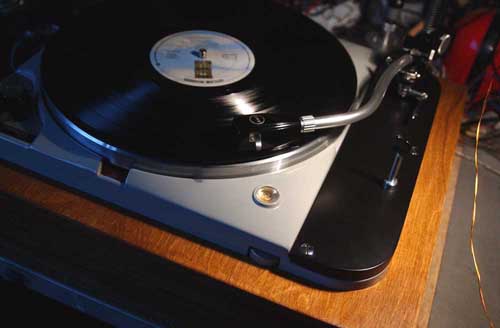
Store your vinyl in unmatched high-sample-rate quality to DVD, using the Altmann Creation ADC, a S/PDIF to USB adapter and your PC with DVD-burner.
If you use the excellent Eximius DVD2one Audio Remaster software, you can create your own perfect audio DVD's that run on any DVD-player.
There are no digital output restrictions with your self burned DVDs, so you can play them back in ultimate fidelity with the Altmann Attraction DAC, using the digital output of your DVD-player.
Reviews
Way more transparent and dynamic
AMAZING!!!!!!!!!!!!!!! OMG!!!!!!! DEPTH, WIDTH, SMOOTHNESS, PUNCH!!!!!!! AWESOME!!!!!
At 96kHz there was no difference between the analog and digital chain.
Recordings
From time to time I receive digital audio recordings from Creation ADC-owners.
These are mostly vinyl transscriptions done in 96kHz and sometimes the 192kHz sample-rate.
However, the sound of those simple, home-made recordings generally is on a quality level which yet has to be achieved by the supposedly hi-rez offerings of the music-industry (i.e. DVD-A or SACD).
Altmann Micro Machines … Dipl.-Ing. Charles Altmann… Erlenstrasse 15… 42697 Solingen… Germany
phone +49-212-233-7039… email
- Other Altmann Sites: www.jitter.de www.altmann.haan.de www.amm.haan.de
- AMM reserves the right to make changes without further notice to any products herein to improve reliability, function or design.

